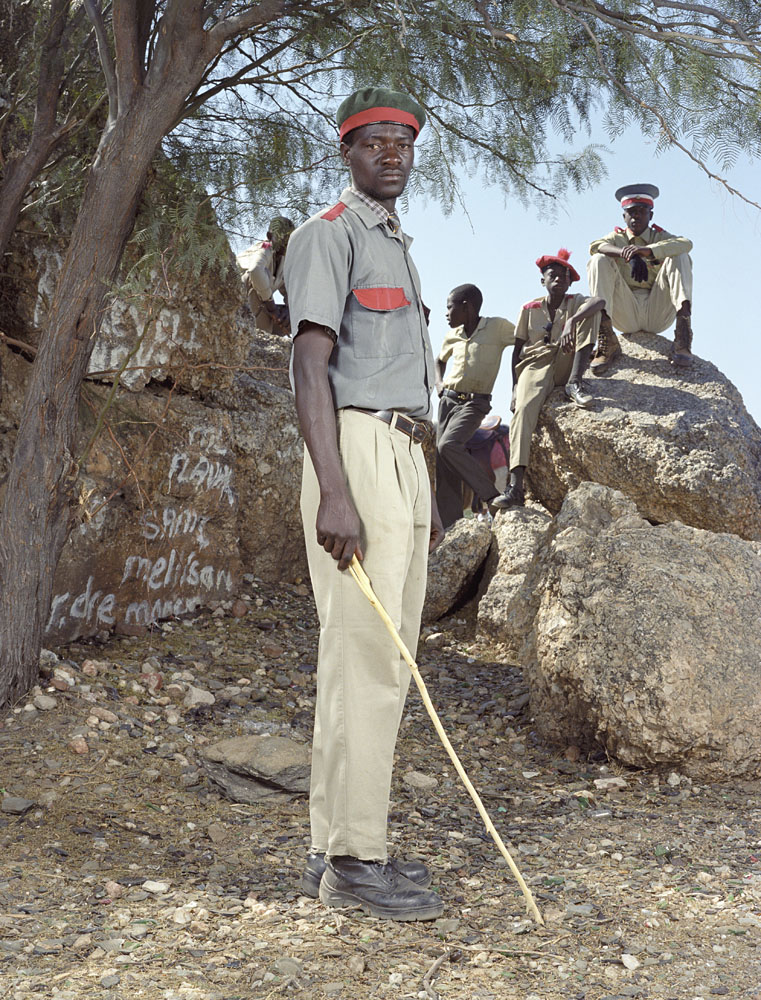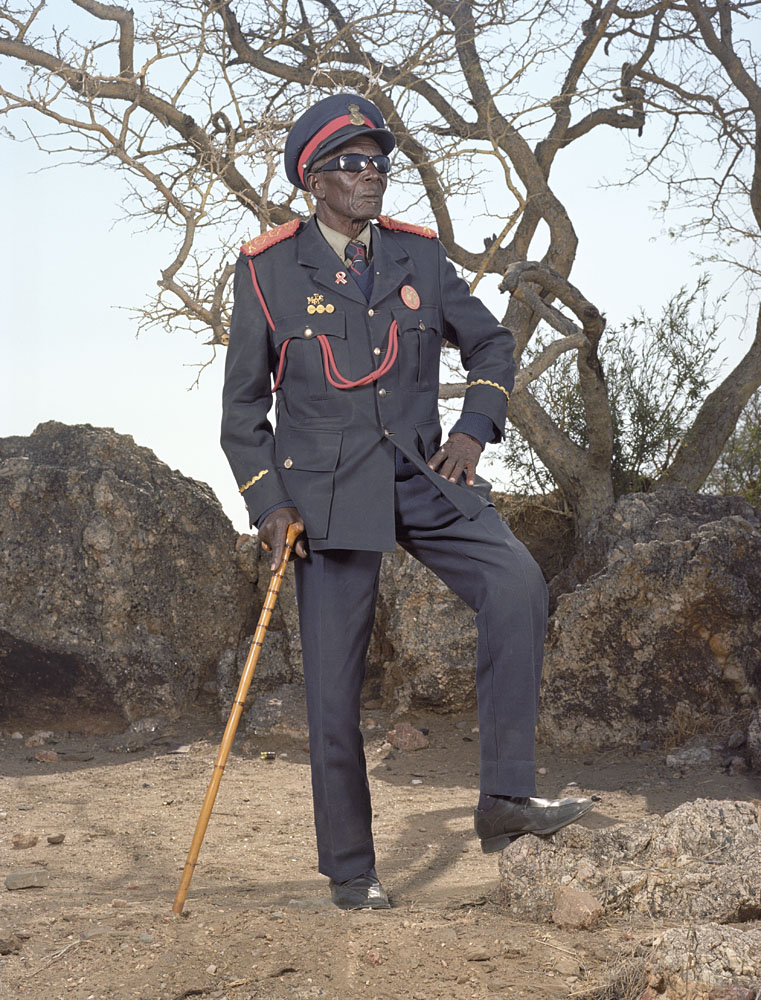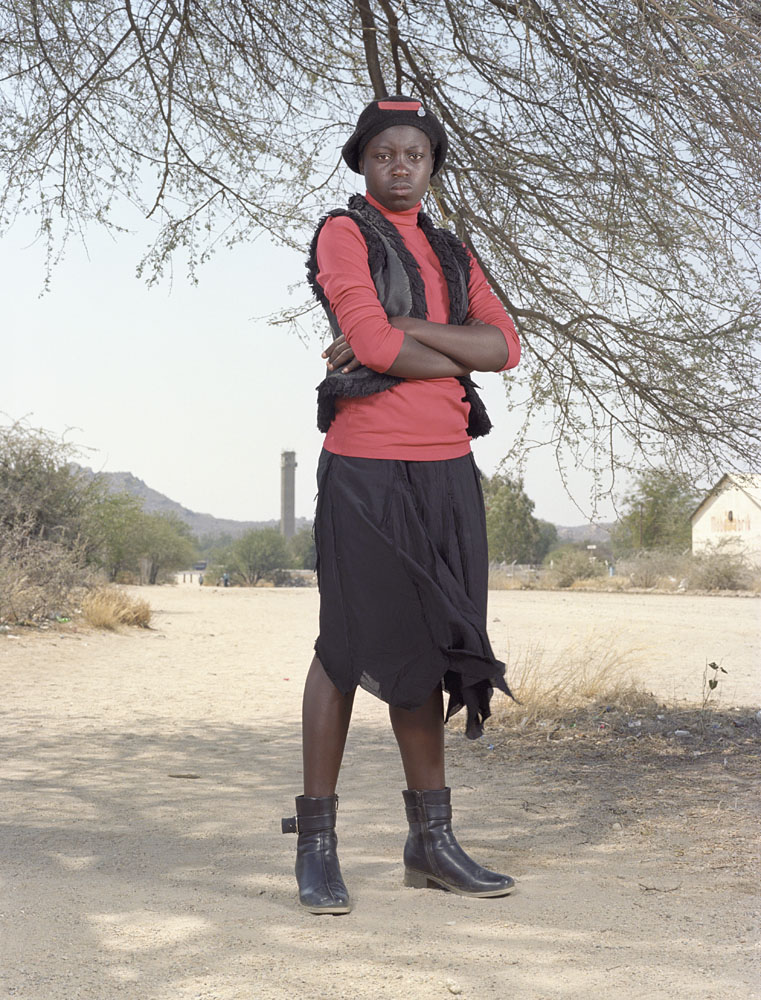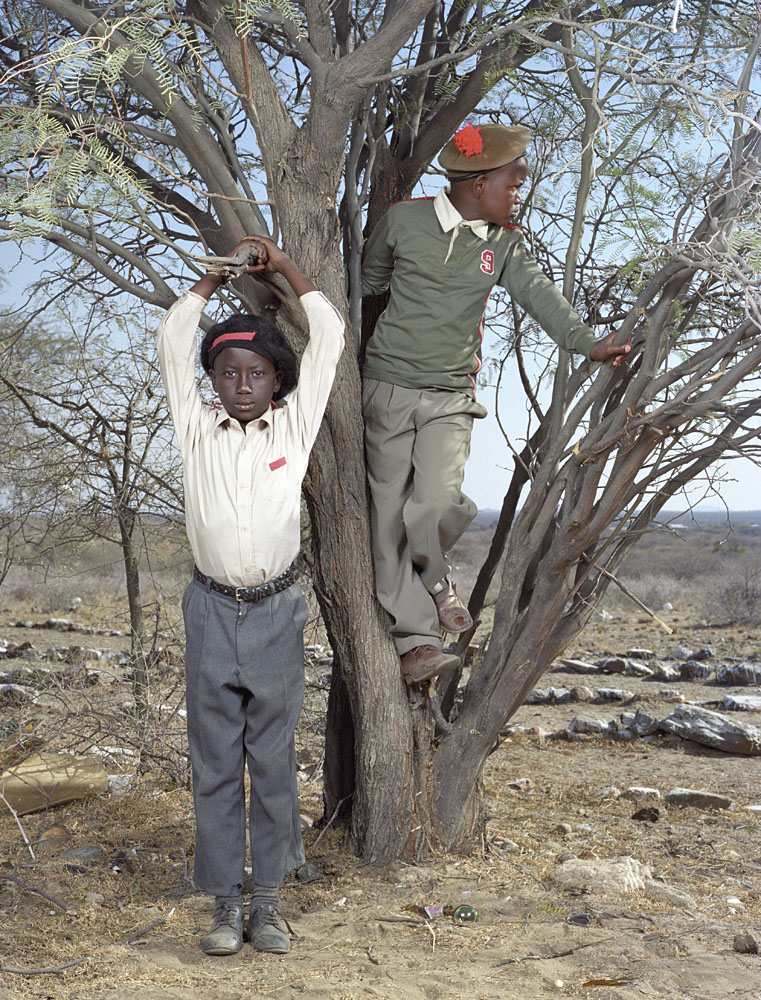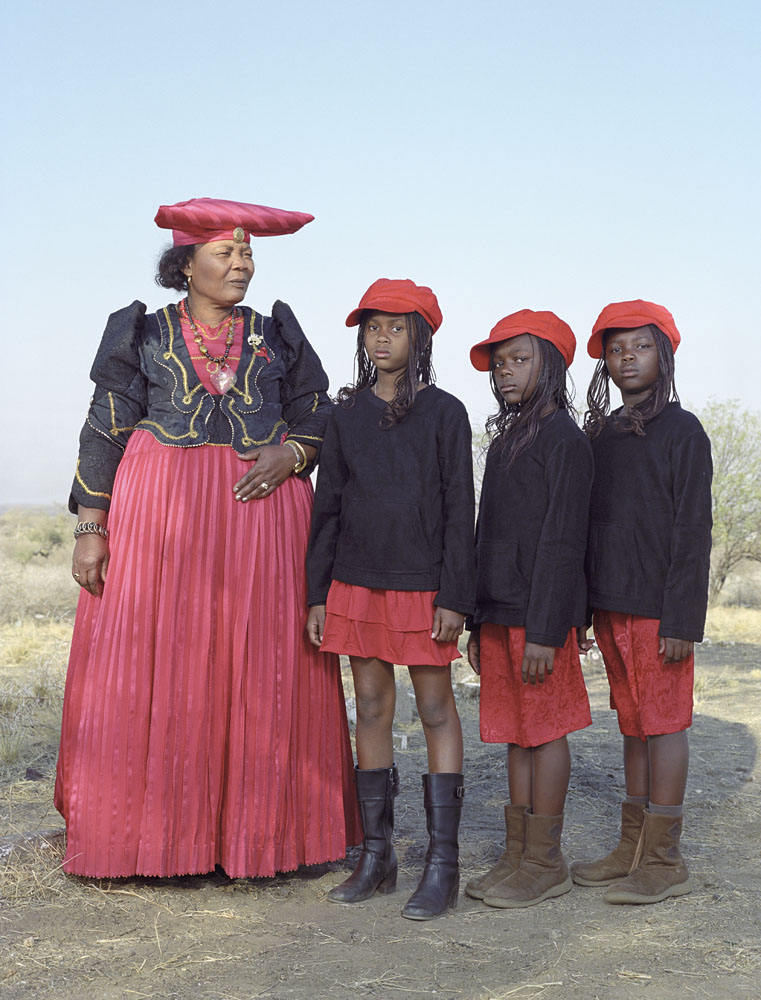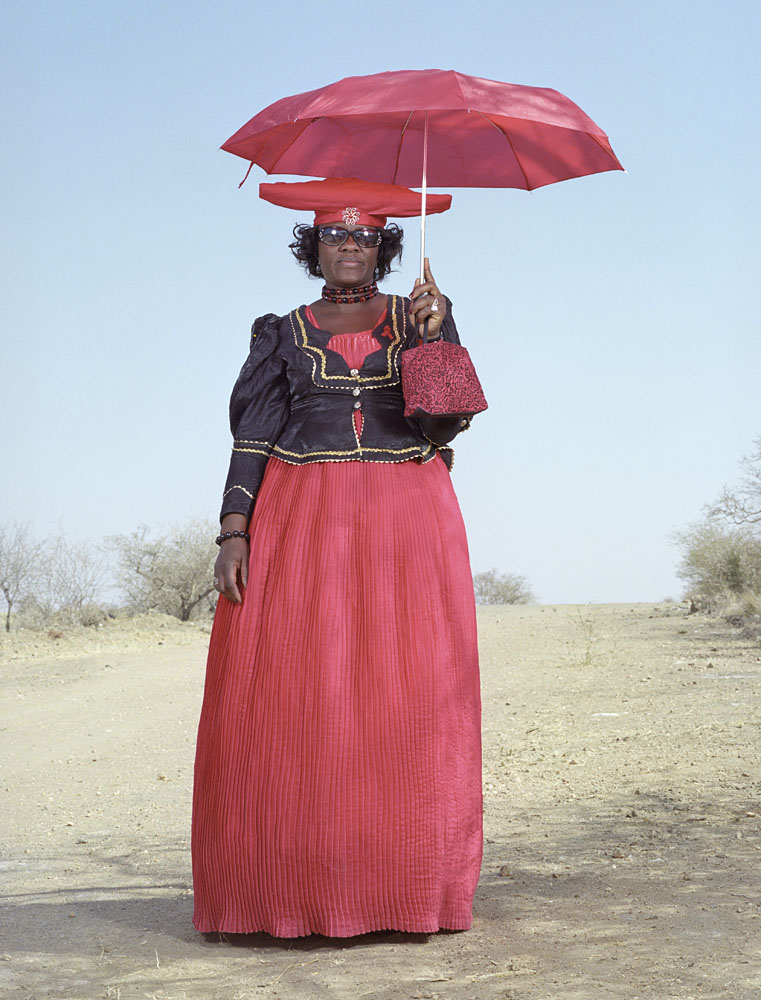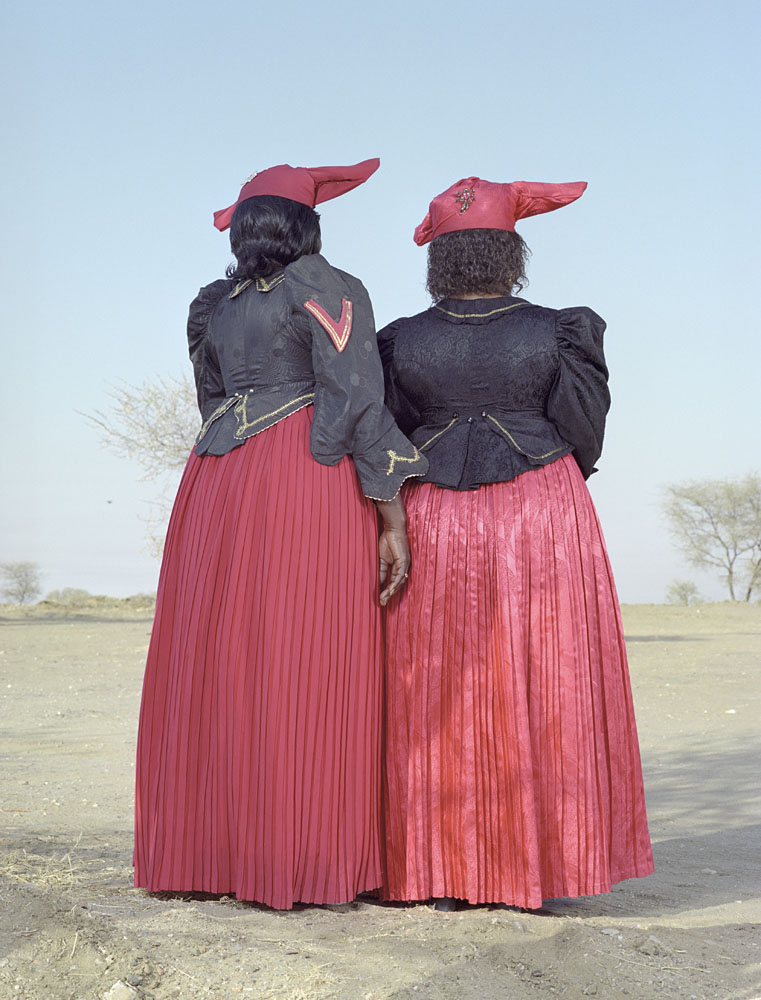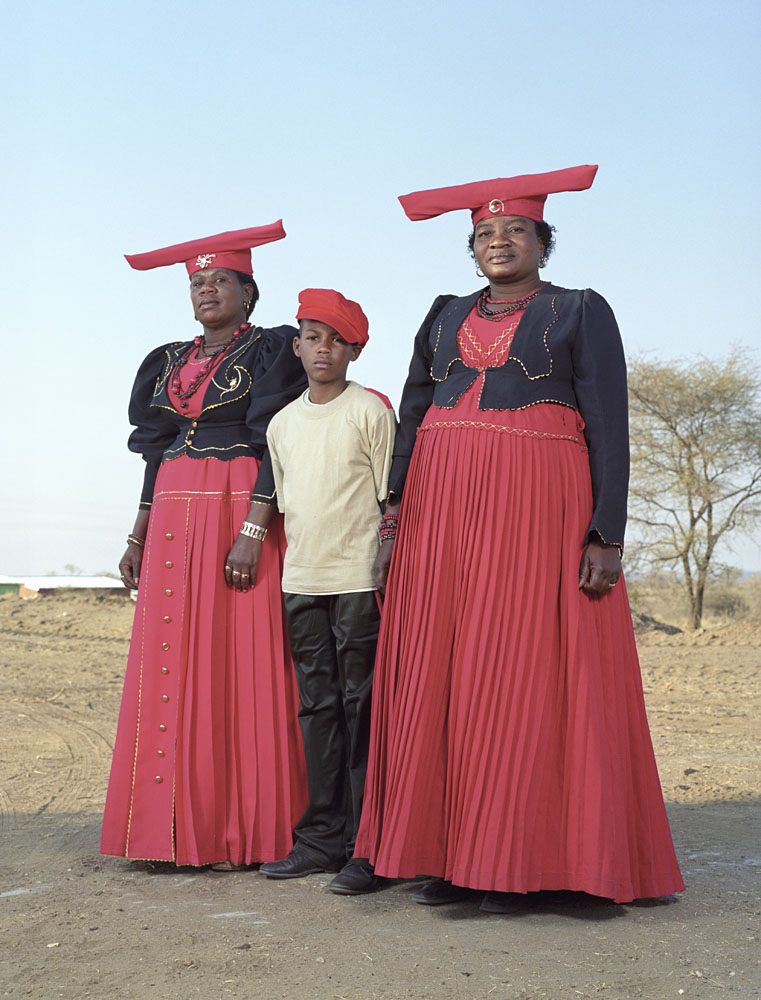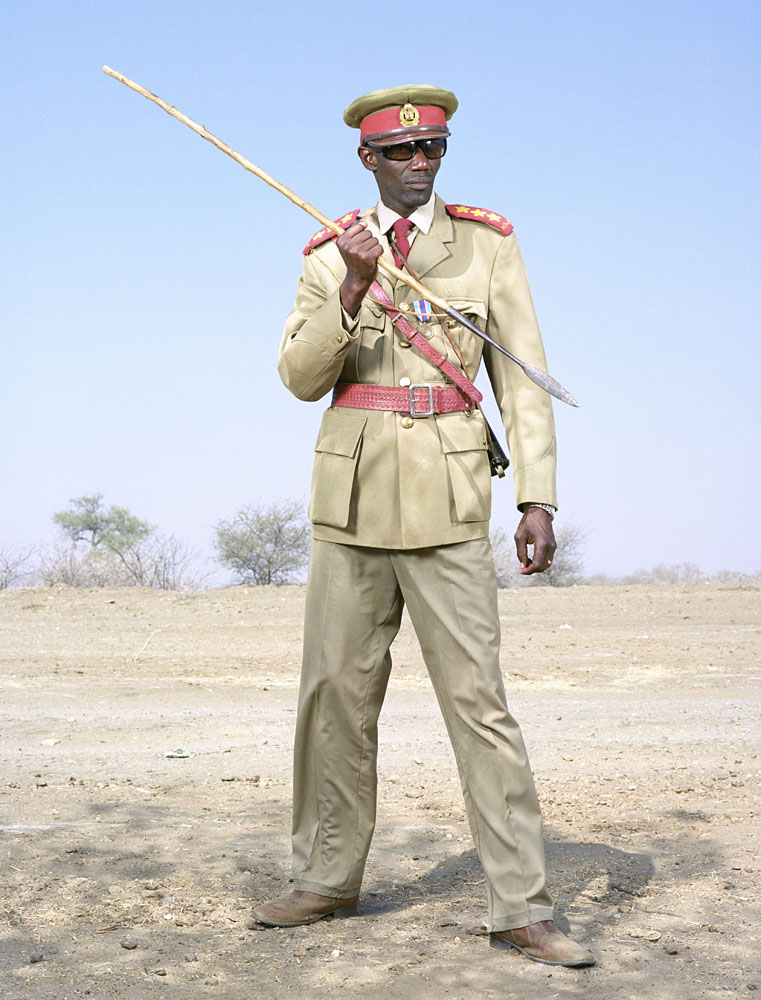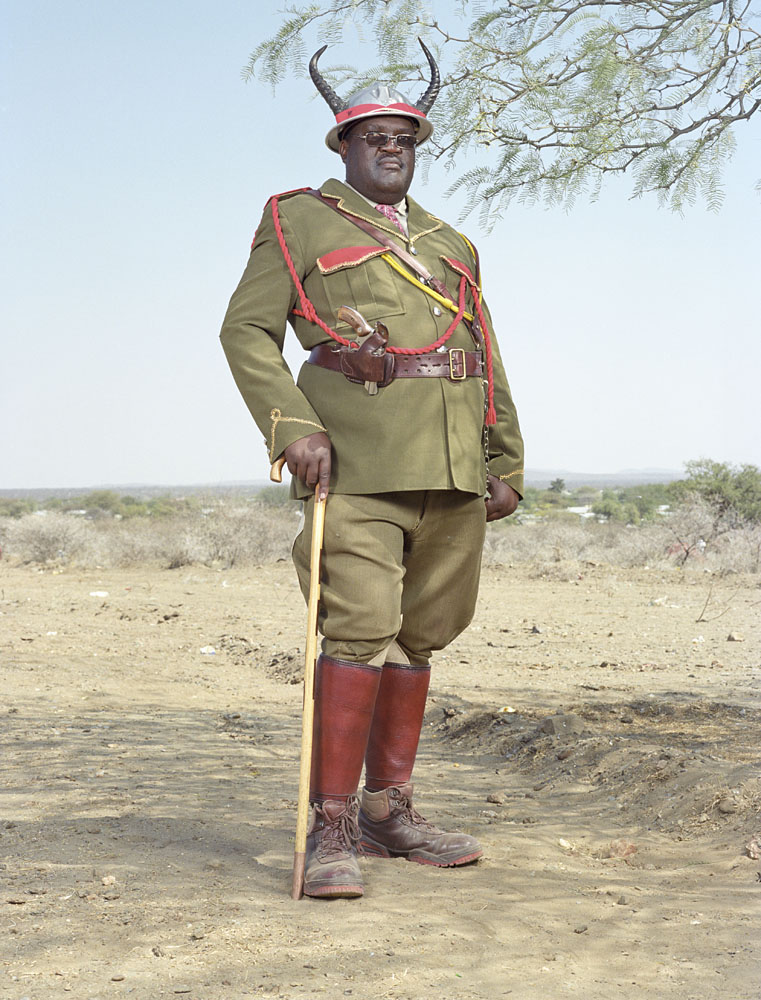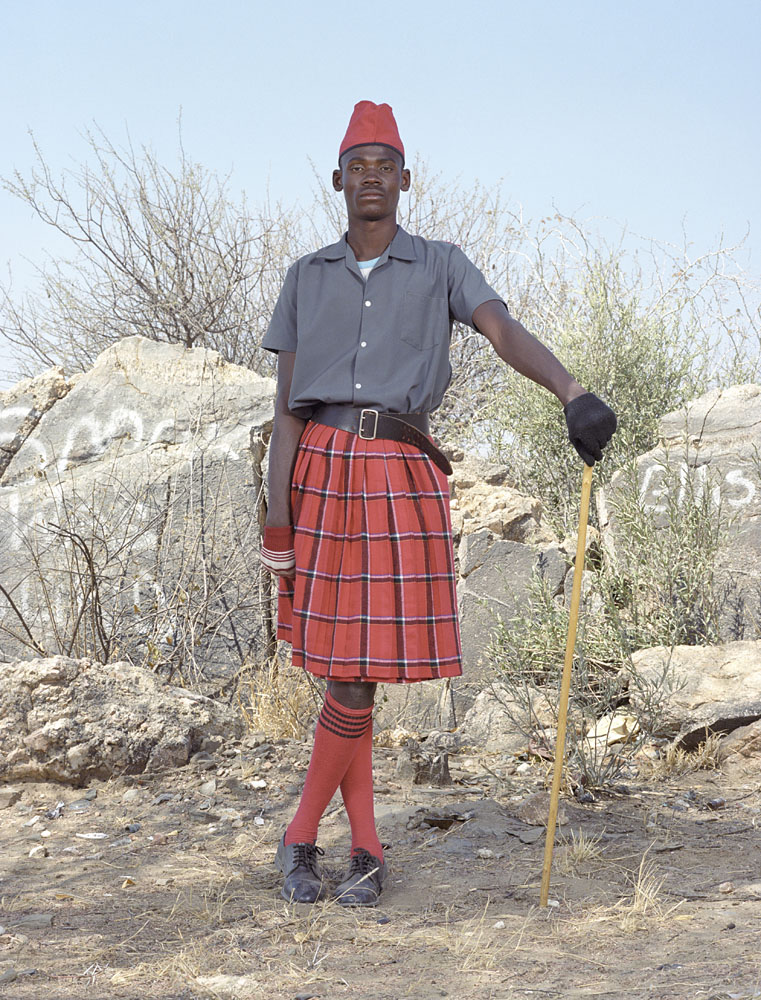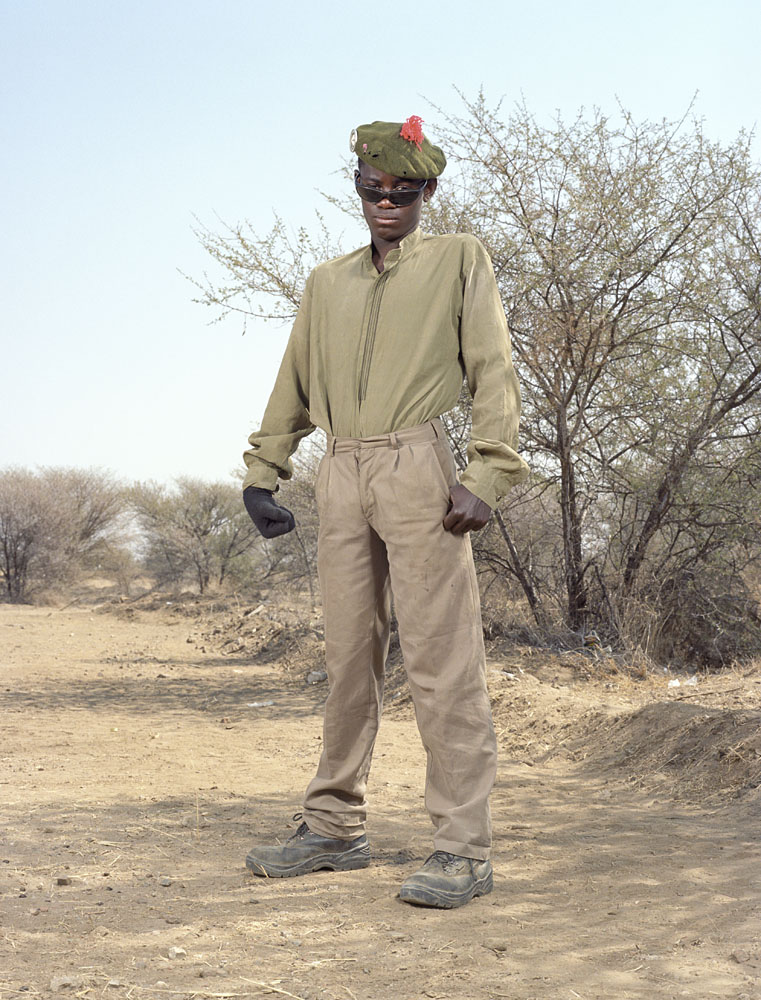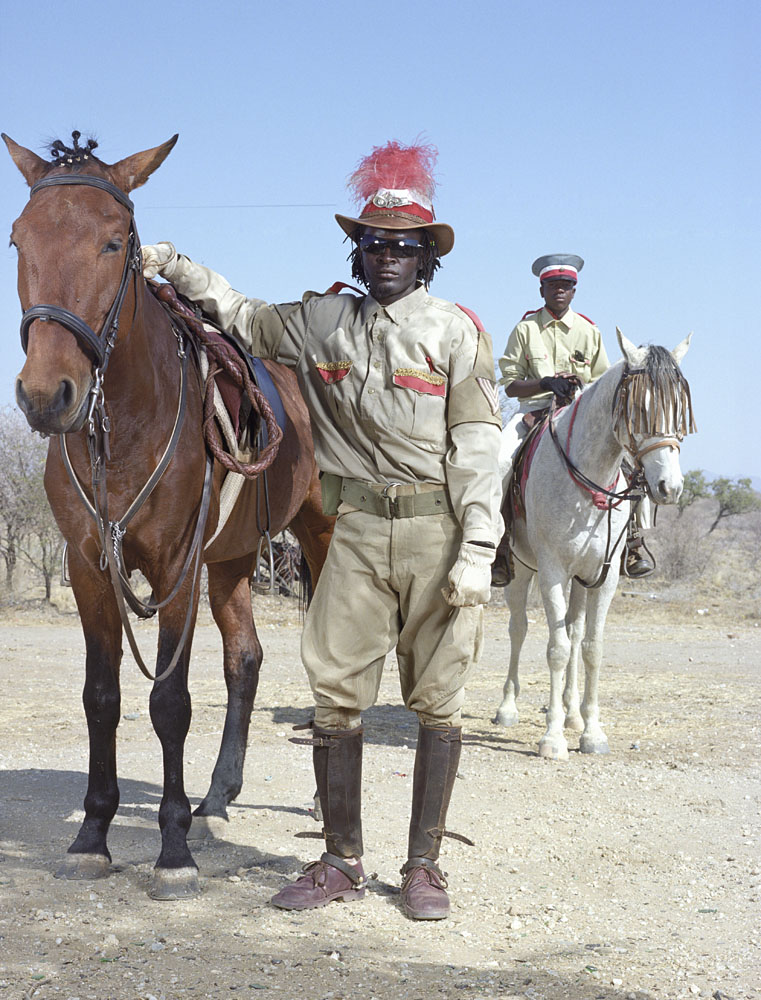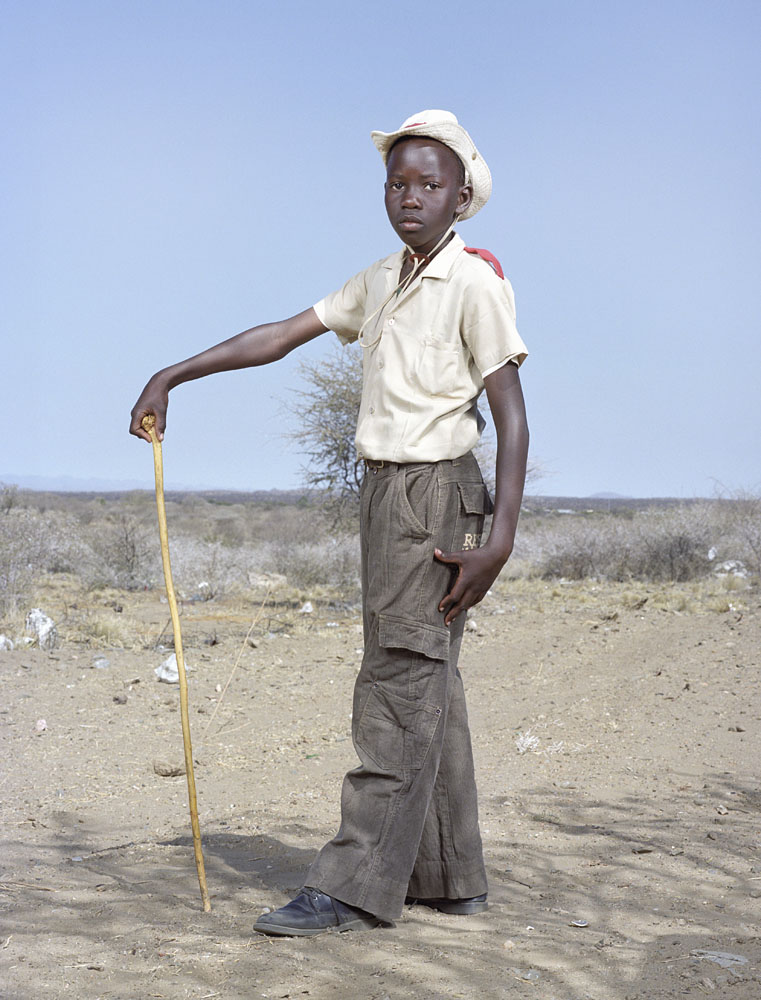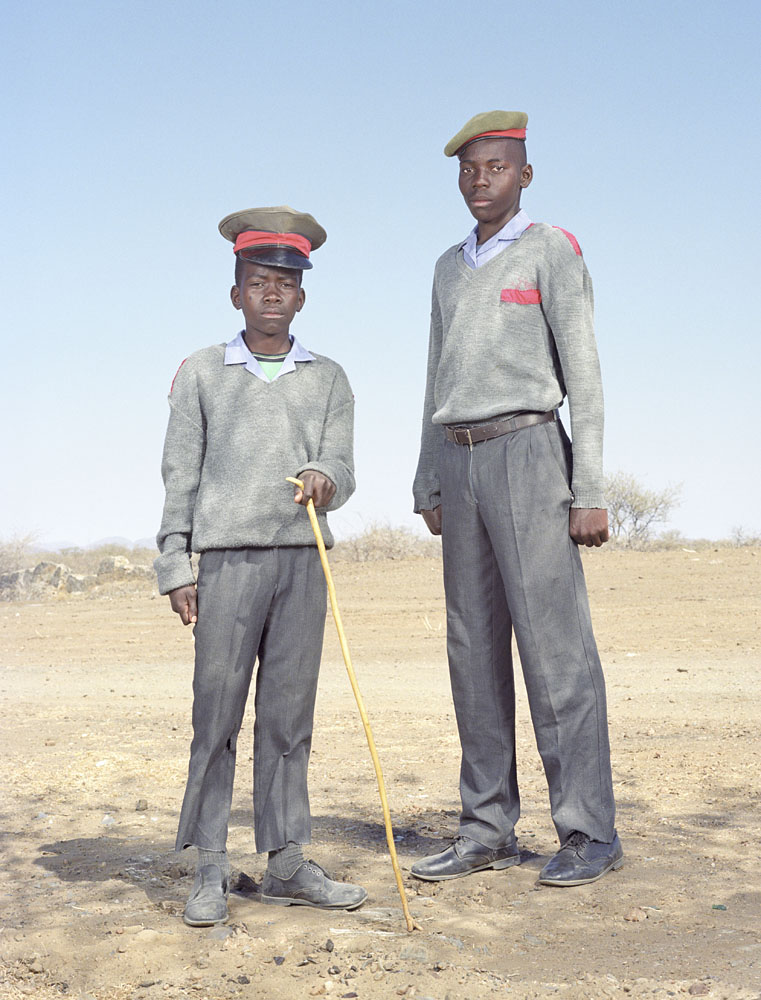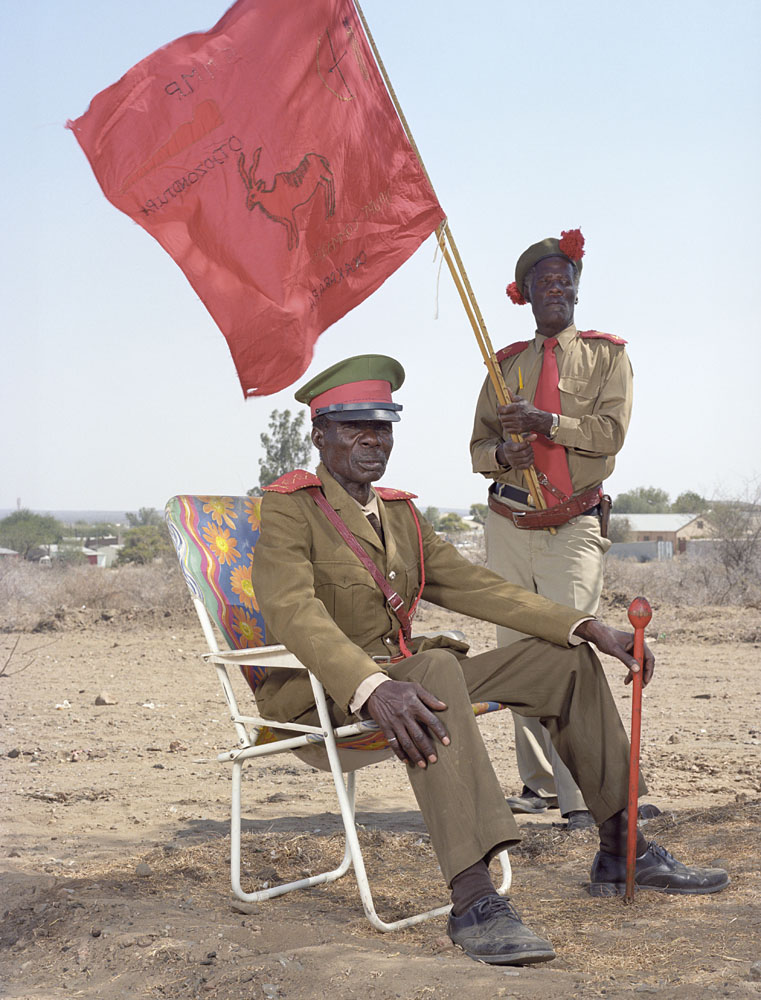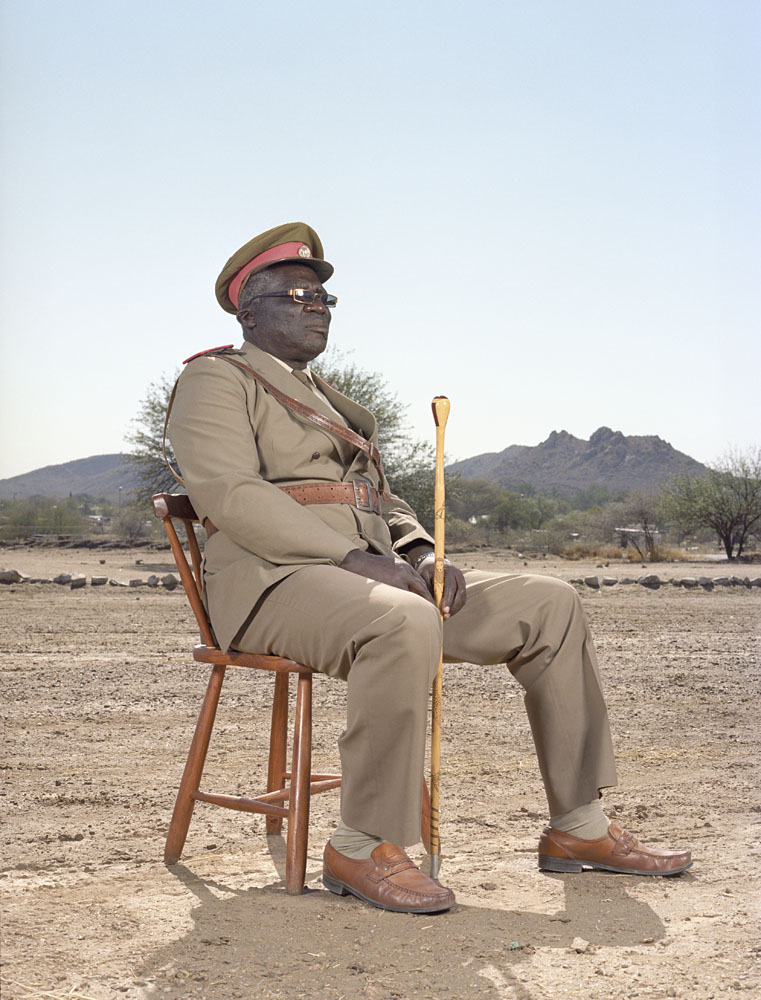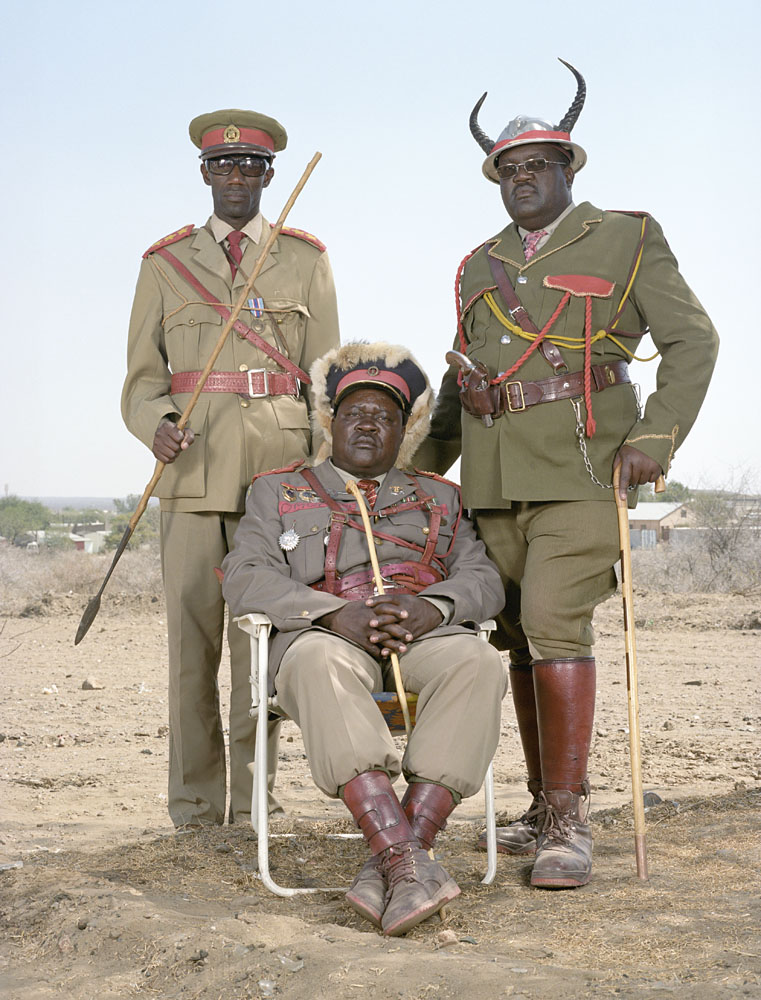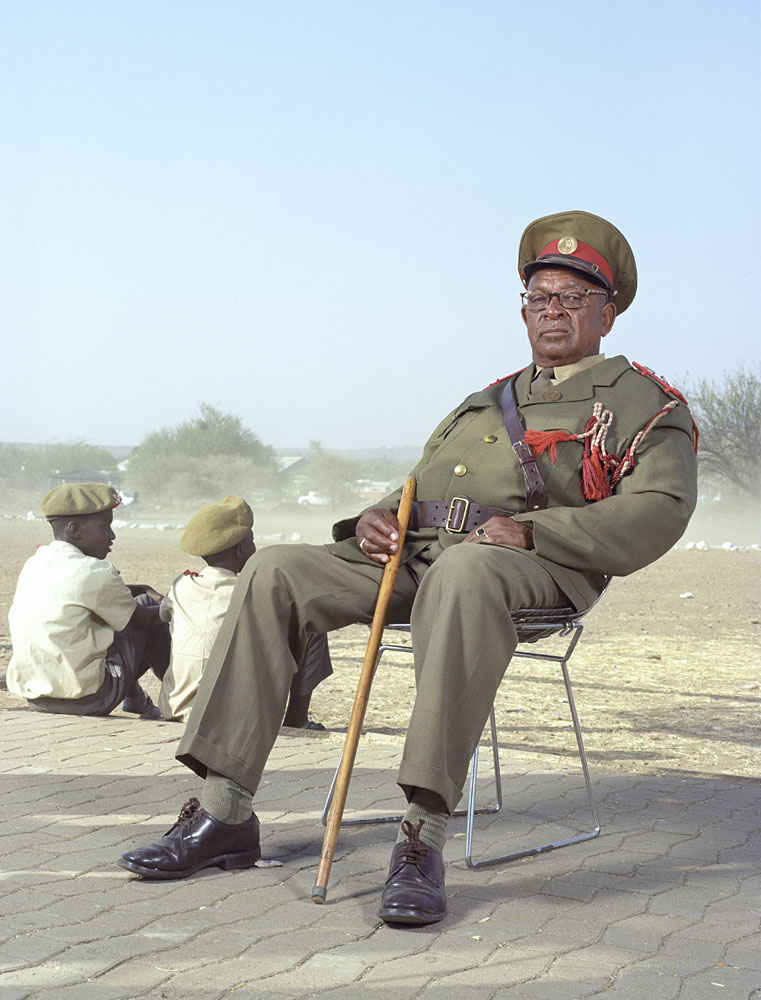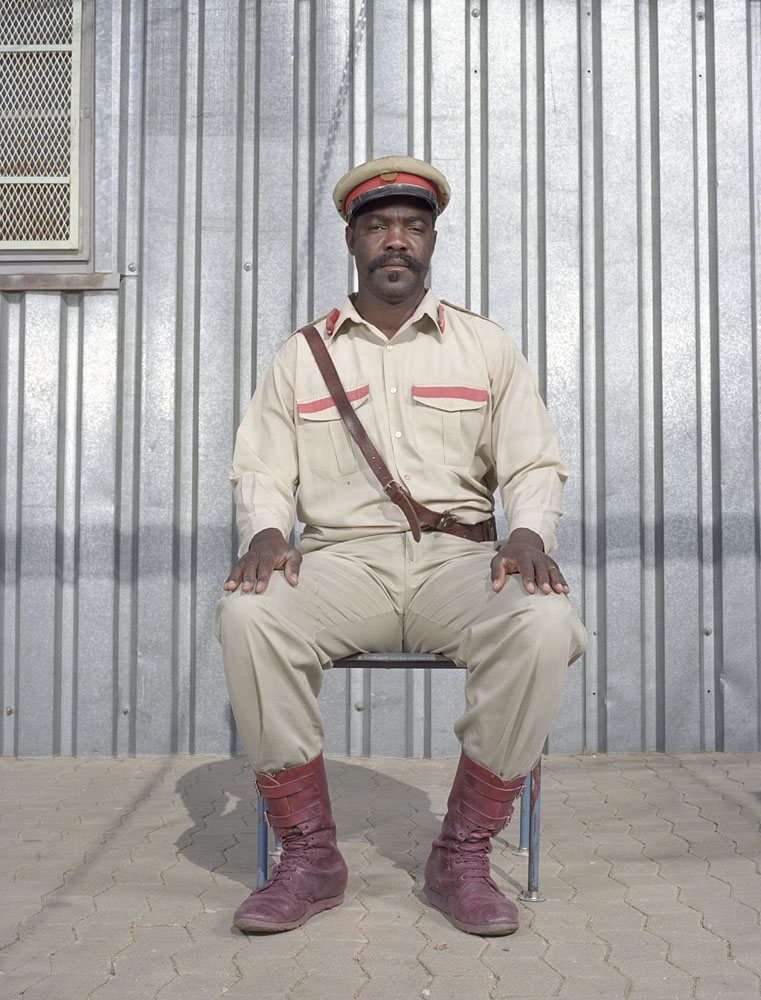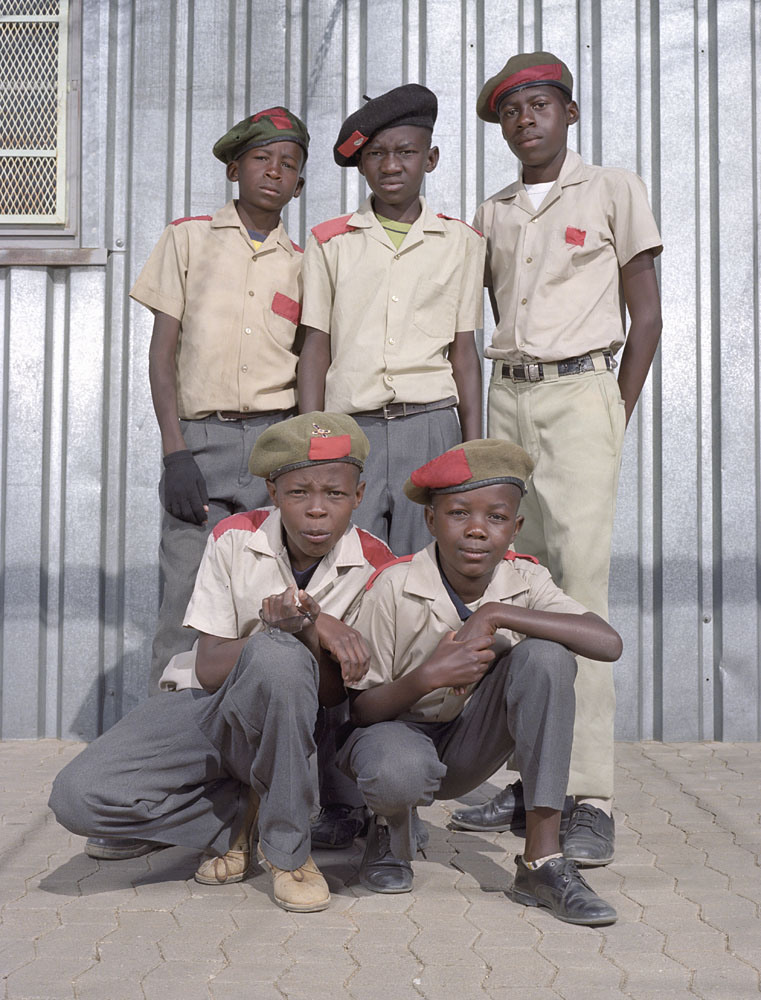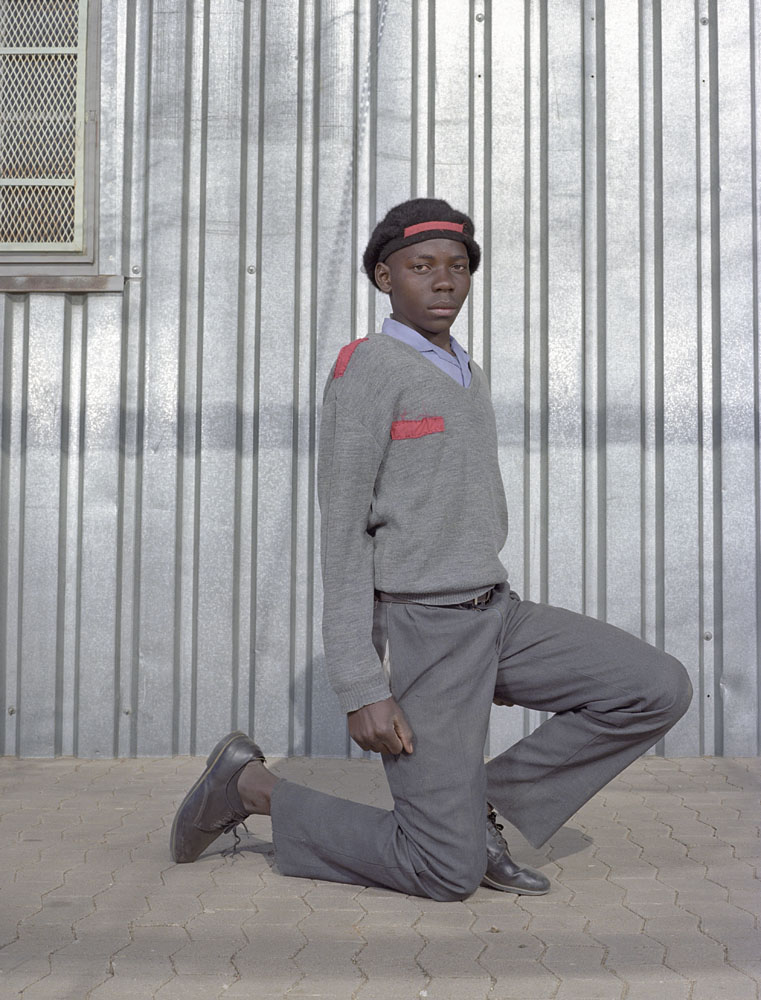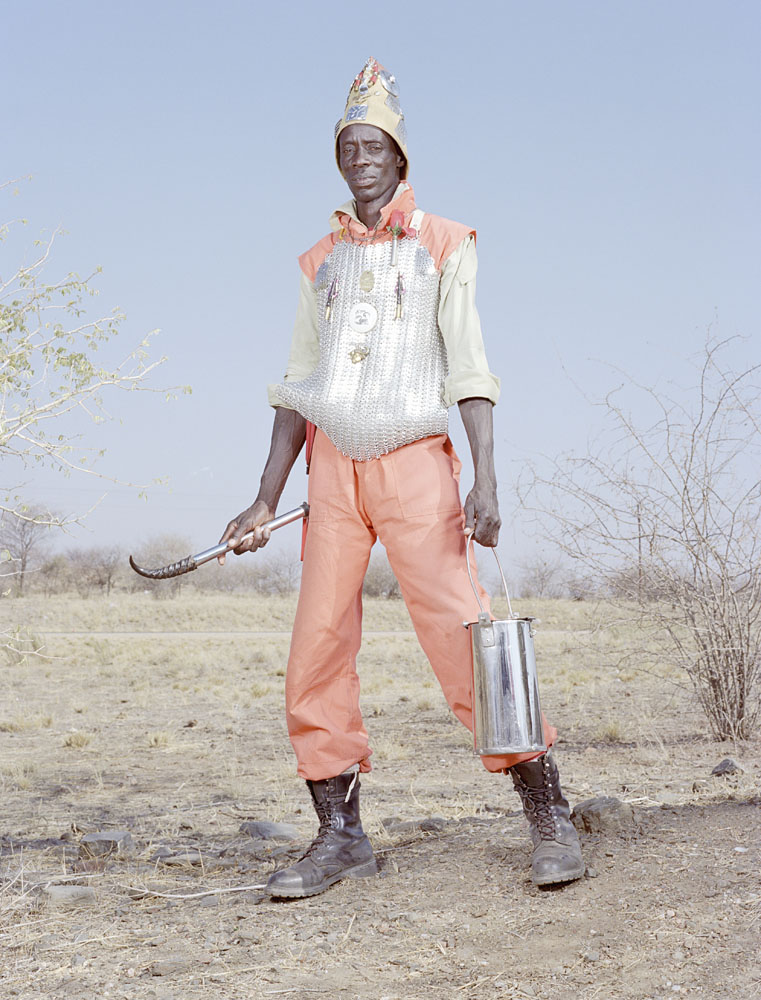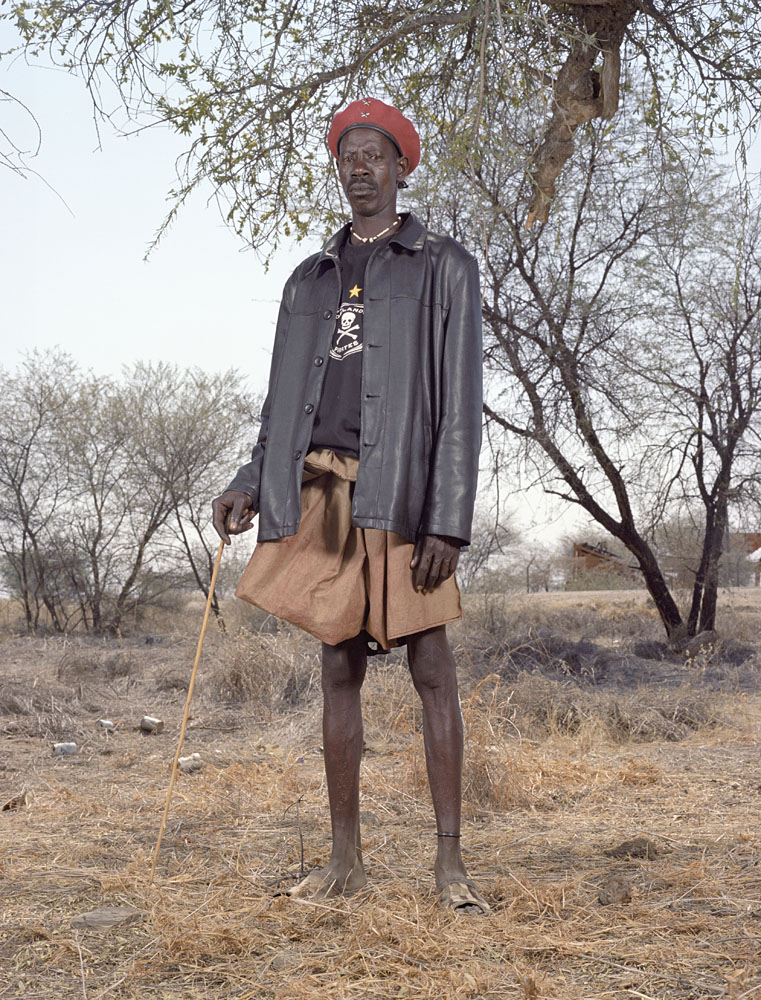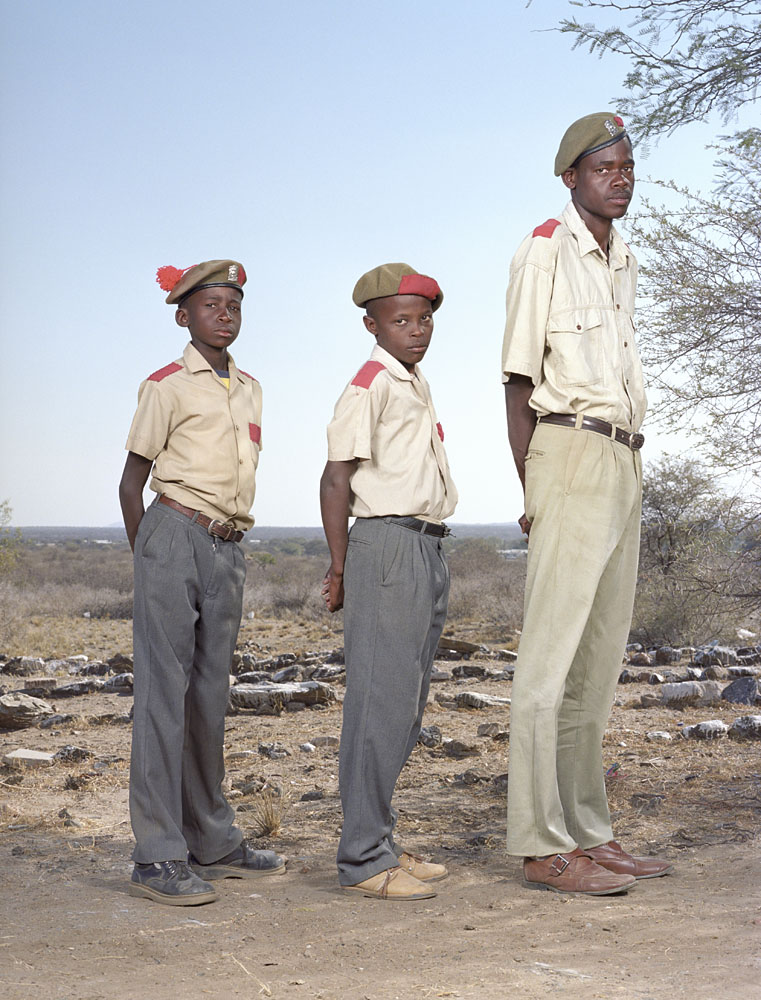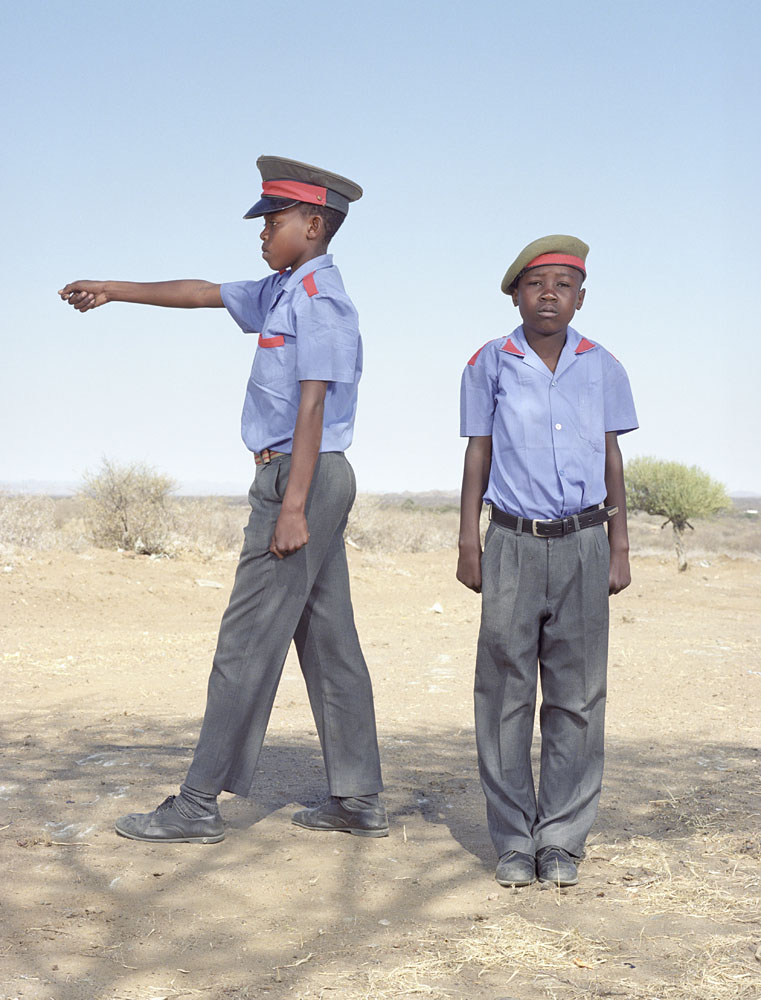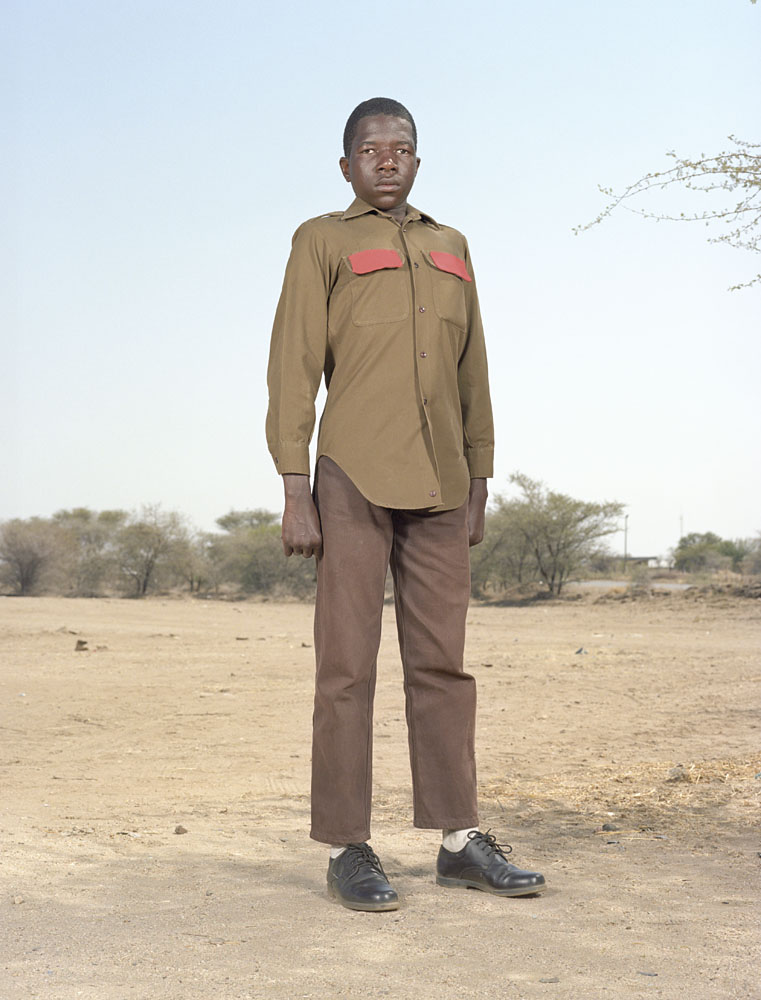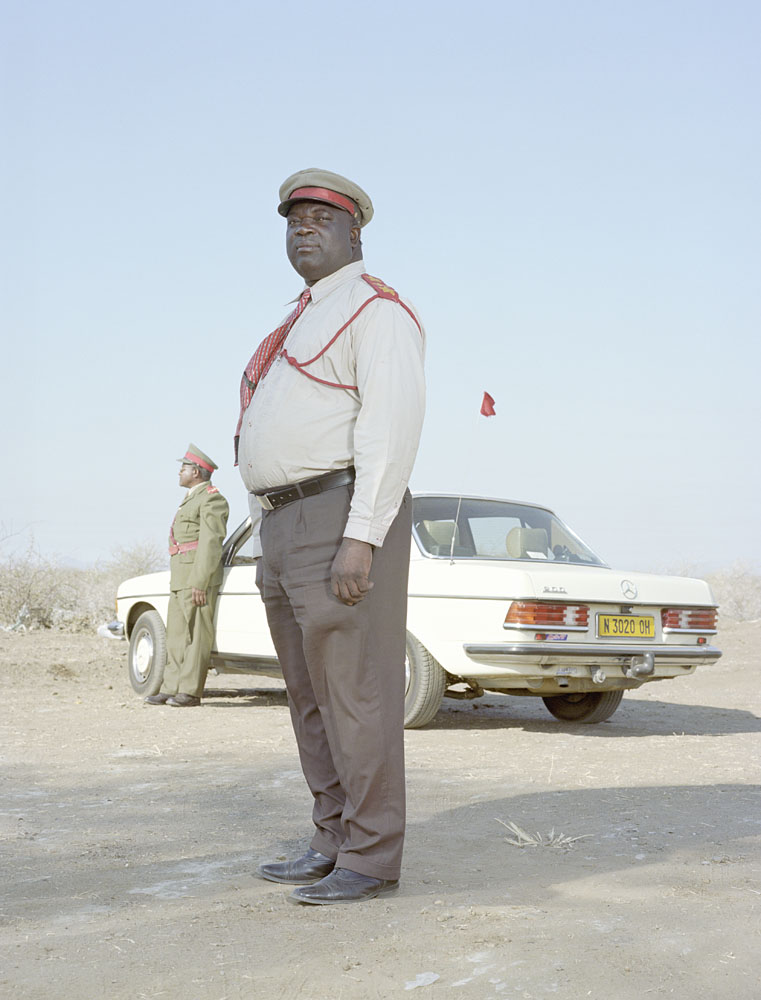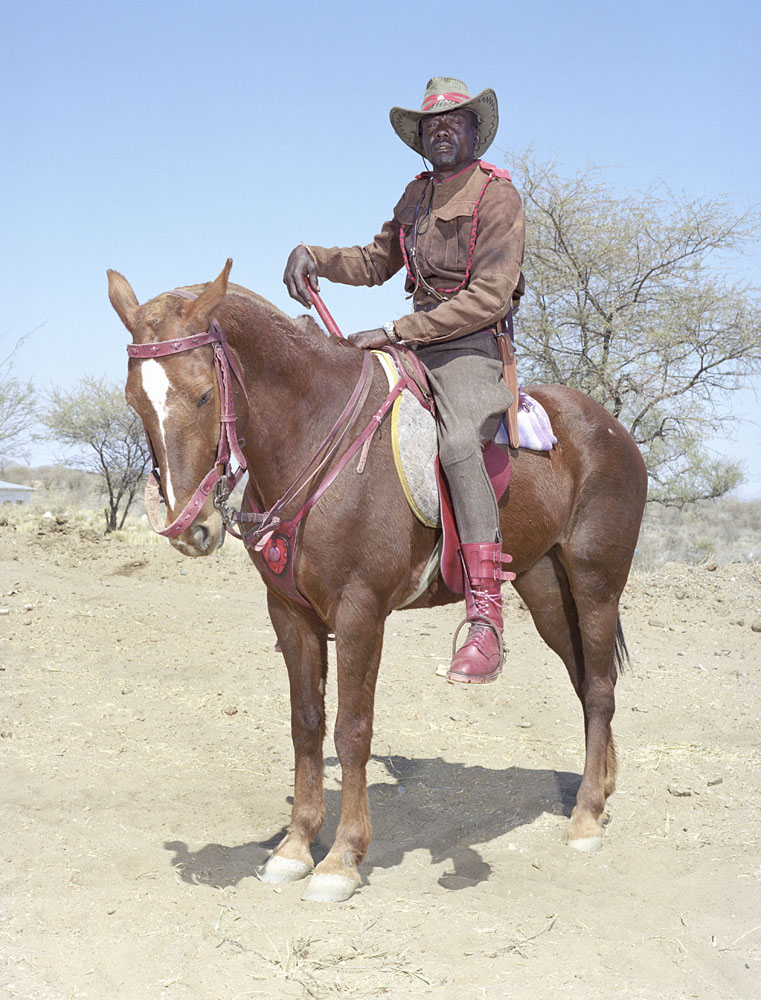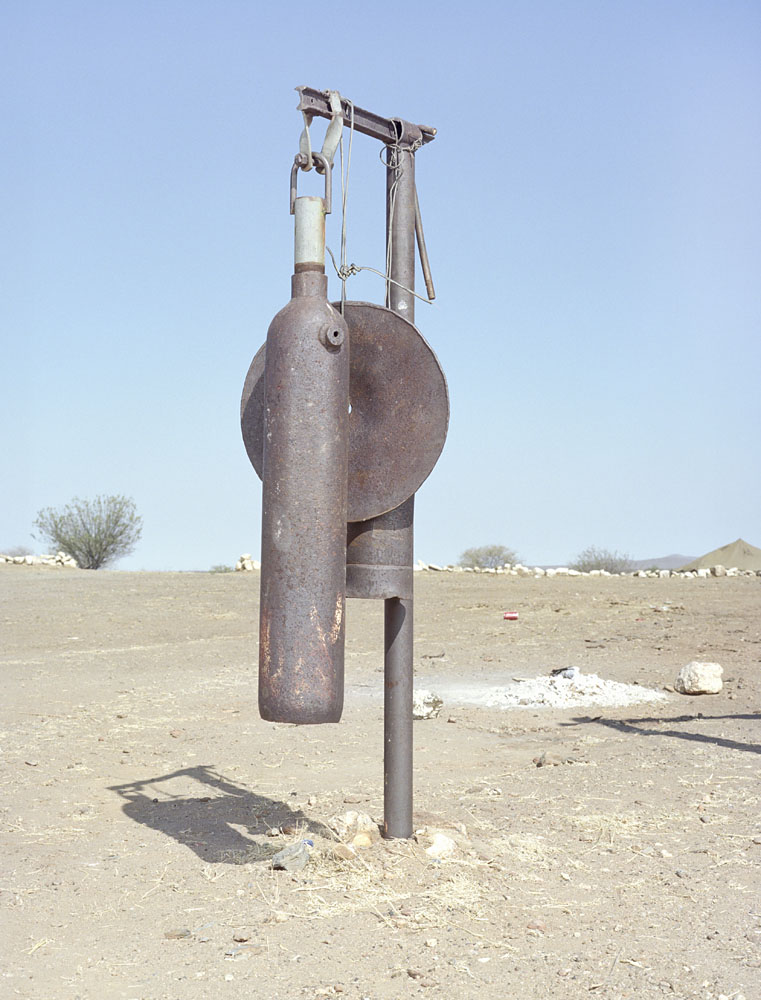They say the Herero women’s dresses have seven petticoats. This people from northern Namibia speaks the same language as the Himba, who have also been the subject of a Charles Fréger series. The Herero people were particularly affected by the colonisation of their country. In 1904, they revolted against the German colonists. The movement was put down in what was the first genocide of the 20th century. More than eighty percent of the Herero population was massacred. The first photographs Fréger took were of Herero women. Their dress devolved from late 19th early 20th century German fashions brought over by the colonists and imposed on the Herero, who until then, like the Himbas, used to wear loincloths. Nowadays, the sizeable figure of a Herero woman is clad in a full-length, crimson dress with a black caraco, and she wears a red ‘horned hat’, a piece of headgear shaped around a mould of folded newspaper. The portraits of the men were taken during the Red Flag Heroes’ Day gathering held at Okahandja to commemorate the first attack against the German garrisons, led by Herero chief Samuel Maharero. The men in the series are dressed in fantasy guards’ uniforms, heterogeneous assemblages with references as diverse as the British Army, the German army, the Black Panthers and Amin Dada. The uniforms are home-made and of widely different styles. But gathered together as they are here, there is no doubt that they form an army; the differences give way to the shared pride of the wearers. A fantasy army has taken shape and is ready for action. Clothes have become the locus of the commemoration of history and of this people’s appropriation of it. In making them, the Herero have created a dignified manifesto. Hereros is the first series in Charles Fréger’s corpus where he demonstrates how a community’s dress is the reflection of a syncretic phenomenon. Later series, such as Short School Aka, Sikh Regiment of India and Mardi Gras Indians, pursue this exploration of uniform as evidence of hybridised cultures.
